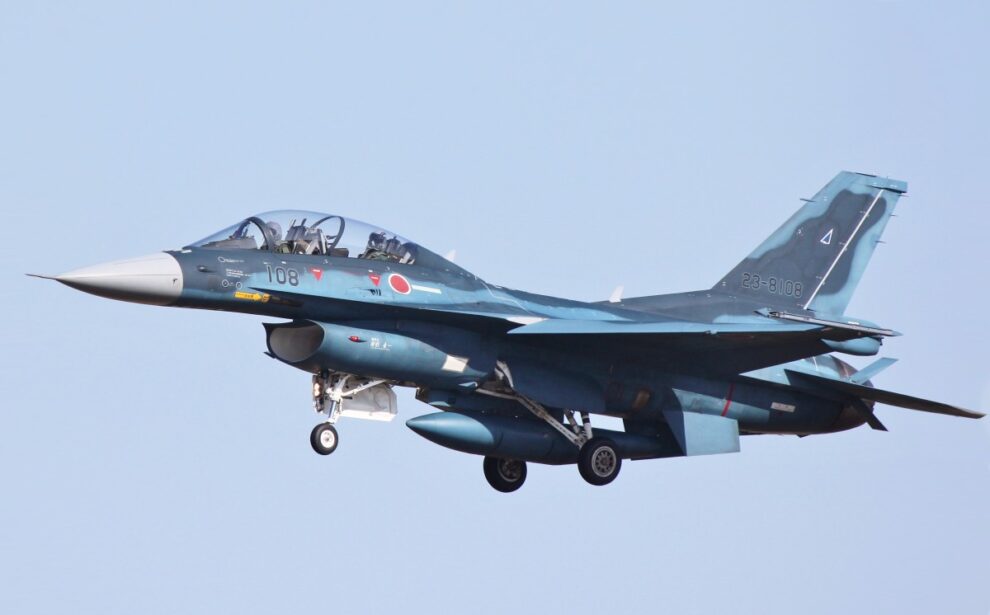Japanese and US attack aircraft are patrolling the South China Sea together as part of a visible effort to deter China
Japanese and US attack aircraft are patrolling the South China Sea together as part of a visible effort to deter China from weaponizing the islands to a greater extent or taking aggressive and provocative actions. The formation consisted of four US Air Force F-15s and a B1-B bomber, supported by a Japanese F-2 fighter jet.
A Bomber-fighter combination introduces a certain kind of integrated deterrence of as a high-speed F-2 could identify targets for a B1-B bomber in the event that an F-2 needs to engage air threats or operate over hostile territory. The most interesting question, it would seem, relates to the extent to which US and Japanese aircraft can network with one another in real time while airborne. True high-speed command and control between the different aircraft from different militaries would truly introduce paradigm-changing multi-national operational capacity. Should upgraded B1-B datalinks connect with the command and control or targeting technology in an F-2, then certainly the extent of deterrence possibilities and the ability to form extended formations is massively expanded.
US-Japanese Networked Attack & Surveillance
Should a formation of this kind be networked effectively, it would introduce a massive advantage in areas such as the South China Sea where targets or hostile activity is likely to be dispersed across large swaths of ocean. Islands spread across the highly disputed Spratly Island Chain are separated by vast bodies of ocean and may each contain high-value targets or adversary operations of interest to combined US and Japanese aircraft force.
The Mitsubishi Japanese F-2, based to some extent upon the General Dynamics F-16, can reach speeds of Mach 2 and travel ranges greater than 500 miles. Having first flown in 2015 and then entered service in 2000, the F-2 is reasonably modern compared with the F-15 and F-16 and travels with a full complement of air-to-ground and air-to-air weapons. The F-2 has a 25-percent larger wing area, composite materials to lower rate and an Active Electronically Scanned Array radar. Interestingly, the F-2 was one of the first fighter jets to receive an AESA radar, according to an Aviation Week essay from 2019, The F-2 was also joined by four F-15s, 1980s-era aircraft which have been substantially upgraded to become an entirely different, modern aircraft with new computing, radar, weapons and avionics.
B1-B To Fly into 2030s
The B1-B has also been massively extended, as the service intends to keep the aircraft relevant, viable and effective for years into the future until sufficient numbers of B-21s arrive. With this in mind, the Air Force has in recent years been giving the B1-B a massive overhaul to include a ground-breaking ability to travel with hypersonic weapons. The Air Force has reconfigured the weapons bay of the B1-B to greatly expand its weapons carrying capacity from 24 weapons internally up to as many as 40. This expanded bomb-bay allows the B1-B to travel with hypersonic weapons, something which increases targeting possibilities, speed of attack and of course range.
In anticipation of flying the B1-B years into the future, the Air Force has added a new integrated battle station to the B-1 with cockpit displays and datalinks for in-flight connectivity. This targeting technology has been designed to work with a Fully Integrated Targeting Pod which connects video-feeds, cockpit targeting displays and pod controls with fire-control and targeting systems. Upgrades also include the addition of a new Bomb Rack Unit and 60-percent increase in 500-pound class bombs.
The B-1, which had its combat debut in Operation Desert Fox in 1998, went to drop thousands of JDAMs during the multi-year wars in Iraq and Afghanistan.
The B-1 can hit speeds of MACH 1.25 at 40,000 feet and operates at a ceiling of 60,000 feet. It fires a wide range of bombs, including several JDAMs: GBU-31, GBU-38, and GBU-54. It also fires the small diameter bomb-GBU-39.
Source : Warrior Maven










